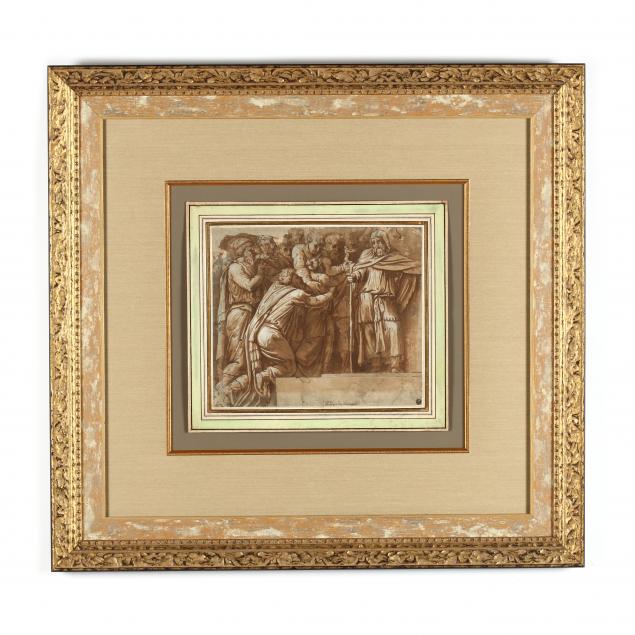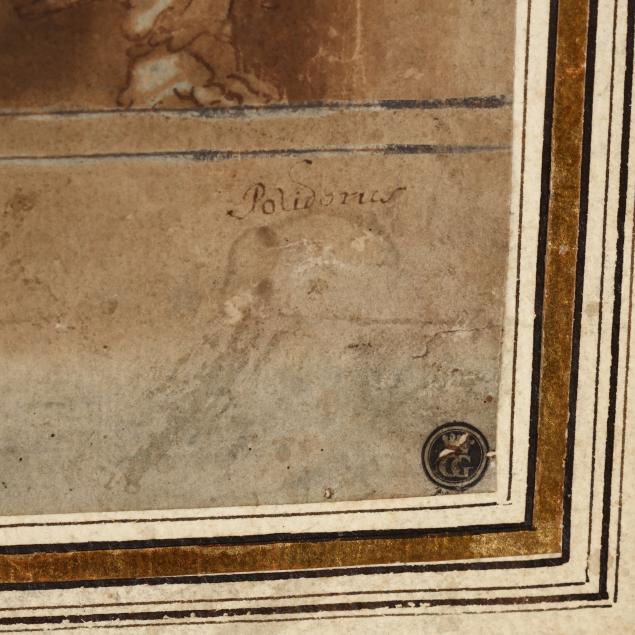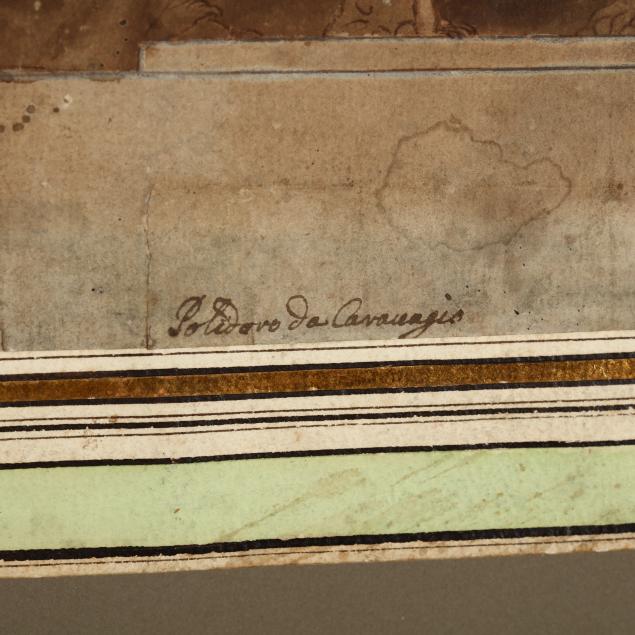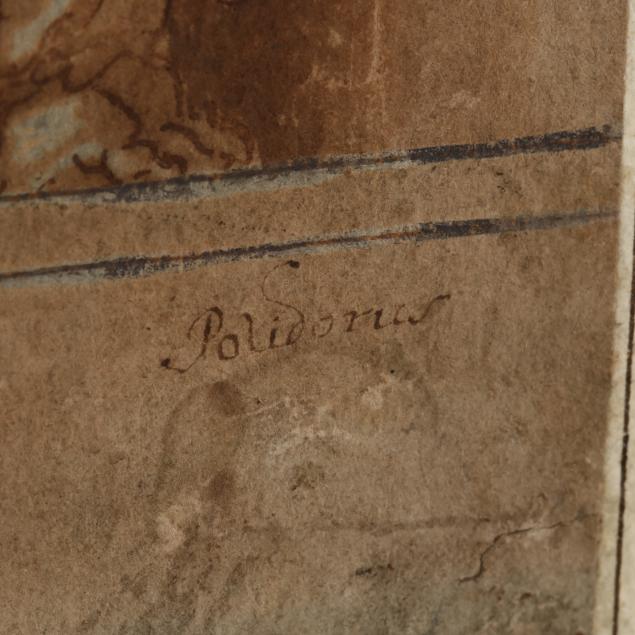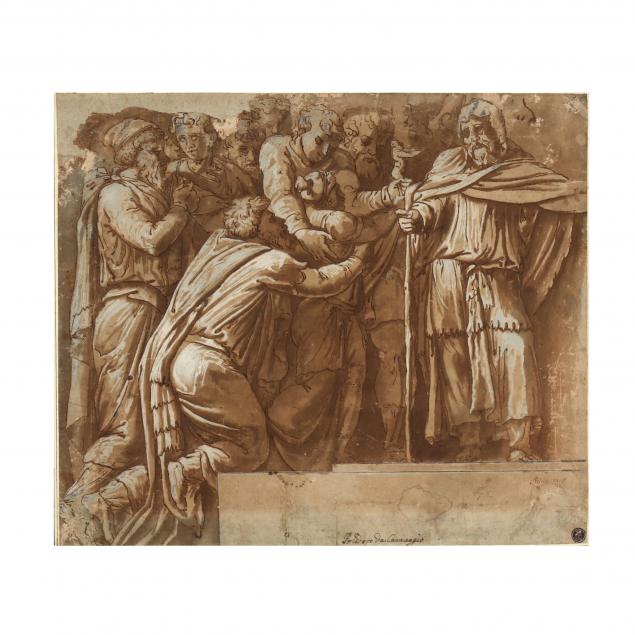
Lot 2065
after [possibly att.] Polidoro da Caravaggio (Italian, circa 1497-1543), Old Testament Scene
Explore more items like this one.
Visit our Fine Art Department Fine Art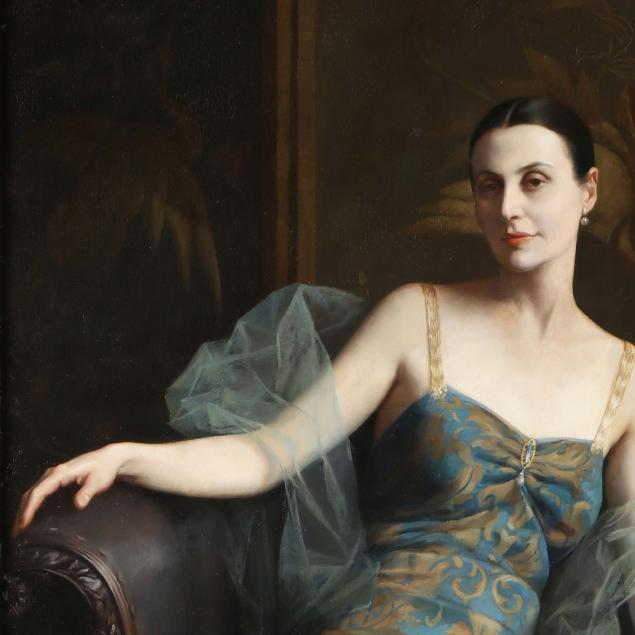
Lot Details & Additional Photographs
Sheet Size 10.5 x 12.25 in. (264 x 310 mm.); DOA 29.5 x 31 1/8 in.
The Collection of Mr. Duggins and Mr. Dunn, High Point, North Carolina
Polidoro da Caravaggio, alternatively known as Polidoro Caldara or Polidorus in Latin, was an Italian Mannerist artist active in the early 16th century as well as a talented student of Raphael. After working as a laborer constructing buildings, he joined Raphael's workshop in 1517 when becoming acquainted with one of Raphael's assistants, Maturino da Firenze. Polidoro worked closely with Maturino on frescoes of Roman palazzi façades and the Raphael Rooms of the Vatican. Polidoro later fled to Messina after the Sack of Rome and the death of Maturino, and he found great success working in the High Renaissance style, incorporating his energetic brushstrokes and a sculptural quality to his figures. The legendary first art historian, Vasari, wrote of Polidoro da Caravaggio, explaining that he was robbed and killed by his assistant during a voyage to the mainland of Italy. Little has survived of Polidoro's work - much of the building façade decoration has deteriorated over time - with the exception of several drawings in major international museum collections such as the Getty Museum, Los Angeles; The Uffizi Gallery, Florence; The Metropolitan Museum of Art, New York; and The Louvre Museum, Paris.
Sheet laid down to another sheet; scattered age-related stains, surface abrasions, tears, and spots of loss; some repairs.
